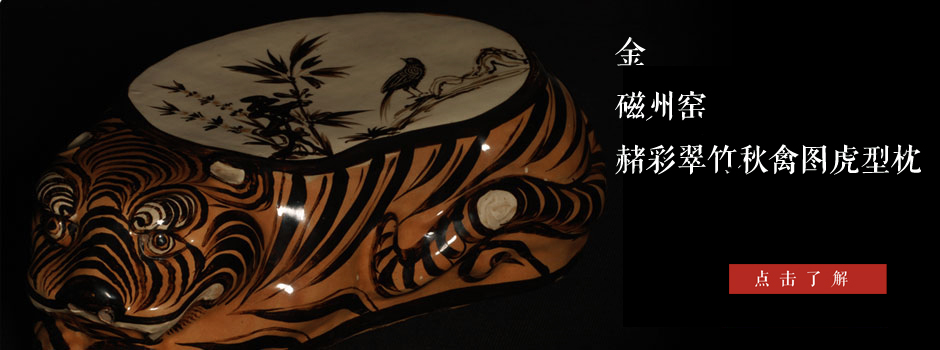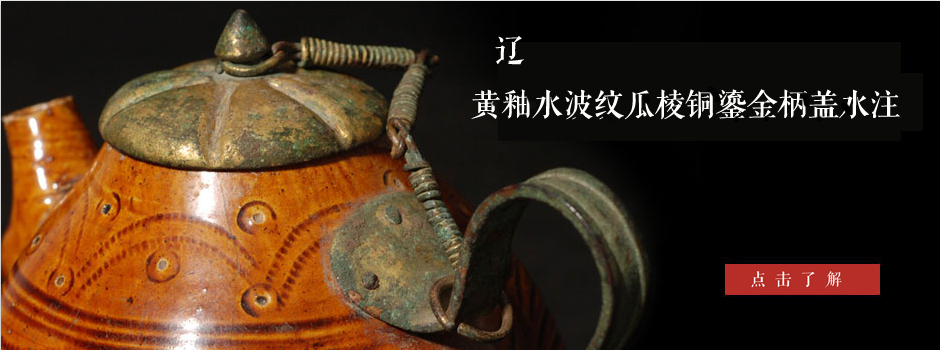- >> Company Profile
- >> President's Speech
- >> Brand Service
- >> Mission & Goals
- >> Value System
- >> Brand Construction
- >> Philosophy and Mode
Address: Room 614-616,China World Office 1, No.1 Jian Guo Men Wai Avenue, Beijing, P.R.C.
Tel:+86-10-65051177
Fax:+86-10-65058988
E-mail:soongs@soongsart.com
Home >> Show Items
Blue-colored Goddess Flat Kettle of Tricolor in Tang Dynasty H:14.5cm
 |
 |
 |
Tang Dynasty is a time featuring tremendous power and comprehensiveness. “All rivers run into the sea, and tolerance brings respect”. Tang Dynasty absorbed the excellent civilization from all over the world with its broad breast. The book Chang’an of Tang Dynasty and the Civilization of the Western Regions authored by Xiangda, had offered certain chapters to discuss the people from Western Regions floating in Chang’an. The book recorded that China’s power to Xiyu, the Western Regions (a Han Dynasty term for the area west of Yumenguan Pass, including what is now Xinjiang Uygur Autonomous Region and parts of Central Asia.)”,which was at the zenith in Han and Tang Dynasties; Central Asian Countries called Chinese people “the sons of Tang Family” in Tang Dynasty, which totally demonstrated the reputation of Tang Dynasty by the surname of Li. From this, we can see that the culture of Tang Dynasty was greatly influenced by the culture of the Western Regions, and due to the open political environment and the good connection of Silk Road, the external exchange became prosperous. In the collision of East and West Culture, foreign culture had impact on and enriched the content and the form of the local culture of the Tang Dynasty. Among enormous impact from the foreign cultures, the art of Sasanian Persian Dynasty exerts great impact on the culture of Tang Dynasty, second to that of Rome and India, especially on gold and silver wares and brocade art, forming a new style of ornamentation on arts and handicrafts in the Tang Dynasty.
Sassan Dynasty (from year 226 to 650 AD) is a dynasty of Persia (Iran currently) with its territory stretching from the Euphrates River to Hindu Kush Mountain range. It is recorded in the history that Persia in Sassan Dynasty had contacted China in Northern Wei Dynasty Period and the relationship continued to develop in Tang Dynasty. In 651 A.D. after Sassan was defeated by Arabian People, the Prince Peros and a large number of Pesians were forced to leave their native land to China. Since then, Persia has maintained close exchange with China for several hundred years.
Sassan is famous for its gold and silver wares. The design of double-eared flat kettle for this product originated from the porcelain and the gold and silver ware in Persian. After spreading to China, these articles became a kind of design style. Double-eared flat kettle of tricolor glazed pottery of the Tang Dynasty is rare among articles handed down from ancient times and unearthed articles. According to the available literature, the porcelain of this design was the unearthed white-glazed beast-like kettle identified for the first time in the fourth year of Daye (It liberally means the great undertaking) (608 AD.) (Picture 1) Flat kettles of tricolor glazed pottery similar to this product were unearthed in Southern Suburb of Suzhou City in Jiangsu Province. (Picture 2) in the times of 650AD with its design similar to this product except four leaf-like ornamentation on its belly, but it is a pity that its glaze surface has been incomplete (Picture 2); Another mausoleum with definite time record is Dongman Mausoleum in the third year of Xianheng Emperor of Tang Dynasty (672AD) (Picture 3) unearthed in Langfang of Hebei Province and the excavated flat kettle of tricolor glazed pottery of Tang Dynasty is ornamented by rolling grass lines with bright color. Tricolor glazed flat porcelain kettles were mainly popular in the early and middle Tang Dynasty.
This kind of flat kettles of tricolor glazed pottery was molded in production, using pearl lining to set off plant lines and animal lines and the common style is Four Leaves and Phoenix Lines. A piece of tricolor glazed flat porcelain kettle with phoenix patters is collected in the Gallery of Japan Matsuoka, (Picture 4), which is the same type as this product and must have been unearthed from the same kiln. The dancing people on this product are extremely rare, circling around with double sleeves. Conjectured from the dancing style, it could be “Hu (a minority tribe to the north of China in Tang Dynasty) dance”.
Young girls from Western Regions were called Huji(a professional female singer) by Tang People. Due to their capacity of singing and dancing as well as the charm from their white skin, many poets of Tang Dynasty vividly described Huji. Such as Li po’s Shao Nian Xing (Youth’s Travel): The young Wulin purchased gold in the east market, and rode his white horse in the spring wind. When the flowers fall, where could he go? He was delighted to join the banquet of Hu dancing girls. The pub not only sells foods and grape wines of the Western Regions but also offers singing and dancing activities by Hu girls, mainly including Hu Jumping Dance, Hu circling Dance, Shi Branch Dance, among which Hu Circling Dance is the most popular one. Tang People generalized its character as “rapid turning as wind” Bai Juyi (a poet of Tang Dynasty) wrote in his poet:
Hu Circling Woman: Hu circling women, Hu circling women. Her heart should respond to the chord and her hands should play the drum. Her double sleeves would be holding up with the sound of drum. In the flutter of snow they turned into tent dancing. They circled from the left to the right as if they know nothing about weariness. It is incomparable in the world, and the fast driving carriage is too slow in the whirlwind. When the song ended they saluted to the Emperor, and the Emperor hesitantly smiled at them. Hu Circling girls left their comfortable residence far away but made futile effort.
Numerous poems have described Hu Circling Dance. The poet Liu Yuxi of Tang Dynasty once wrote: “the body is as light as with no bones and the audience all roll their sleeves. Back at the end of the dance, crowds of people still gathered in the hall”, which definitely portrayed the high-level skills of the songs and dances of Western Regions and the graceful and flexible dancing style. Conjectured from this, the figure lines ornamented on this kettle are most probably the kind of Hu Circling Dance praised and enchanted by the famous poets of Tang Dynasty. Currently, it is extremely rare in the world.
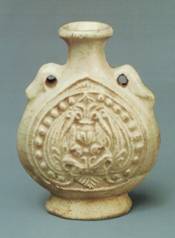
Picture 1 Flat white glaze kettle with beast-look pattern Sui Dynasty The Fourth year of Da Ye (Literally it means the great undertaking) (608AD) Excavation of Li Jingxun Mausoleum in Xi’an of Shanxi
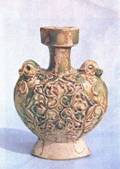
Picture 2 Around 650 AD Flat tricolor glazed kettle of Tang Dynasty unearthed in Southern Suburb of Suzhou City
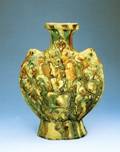
Picture 3 Flat tricolor glazed kettle of Tang Dynasty unearthed from Dongman Mausoleum in Langfang of Hebei Province in the third year of Xianheng Emperor (672AD)
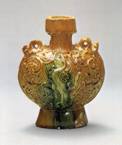
Picture 4 Kettles of tricolor pottery in Matsuoka Gallery. Height 18.7cm
